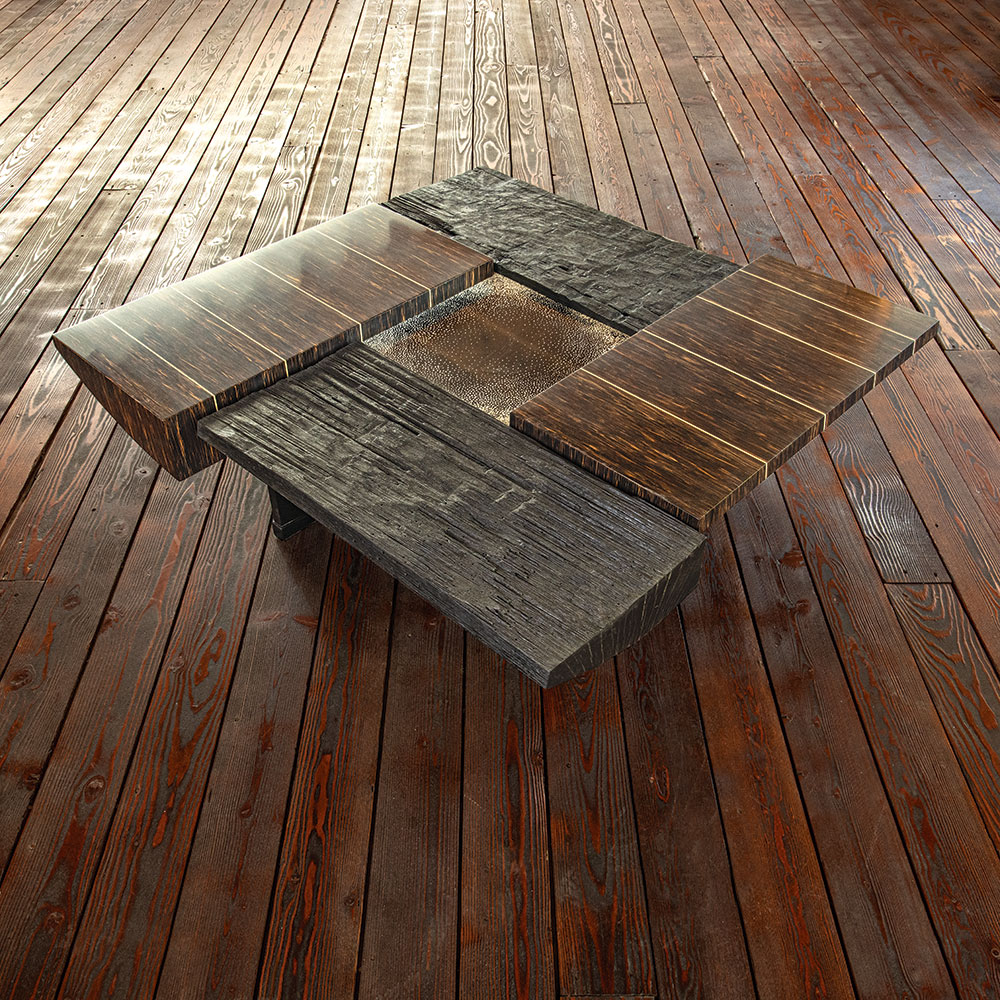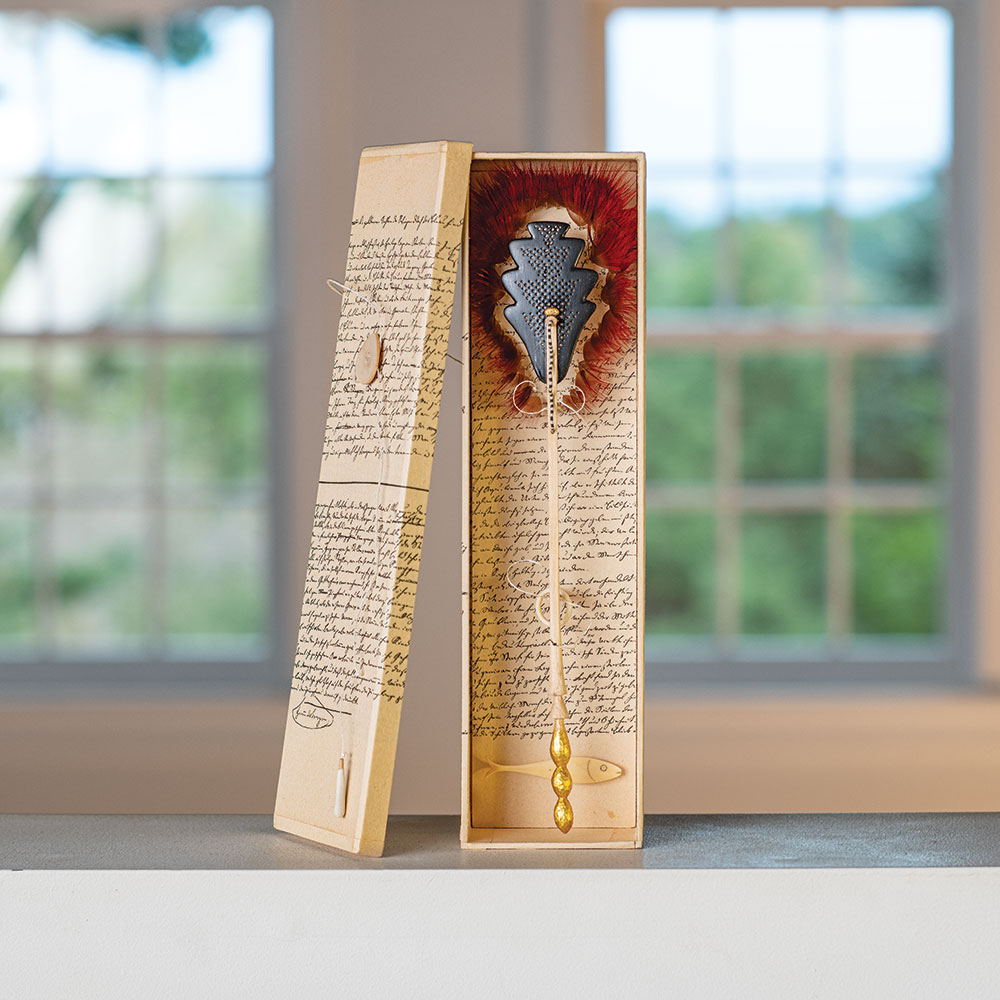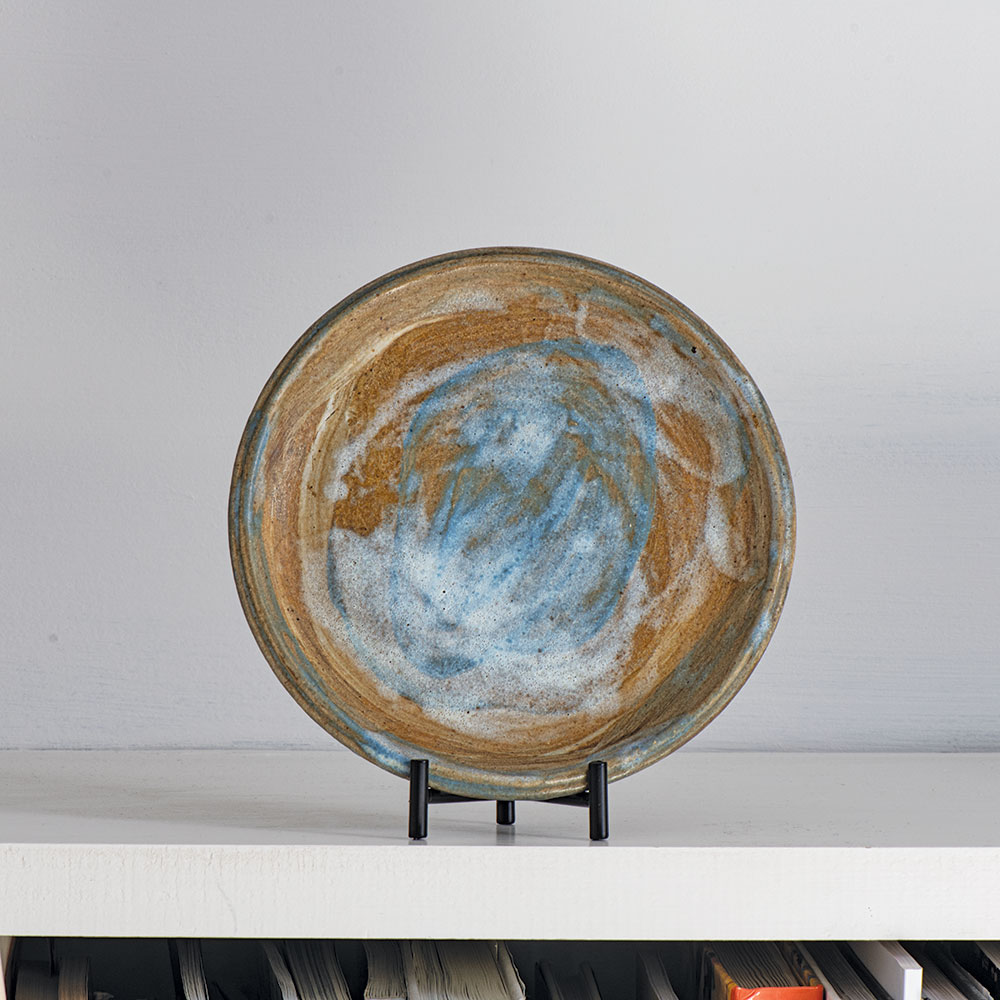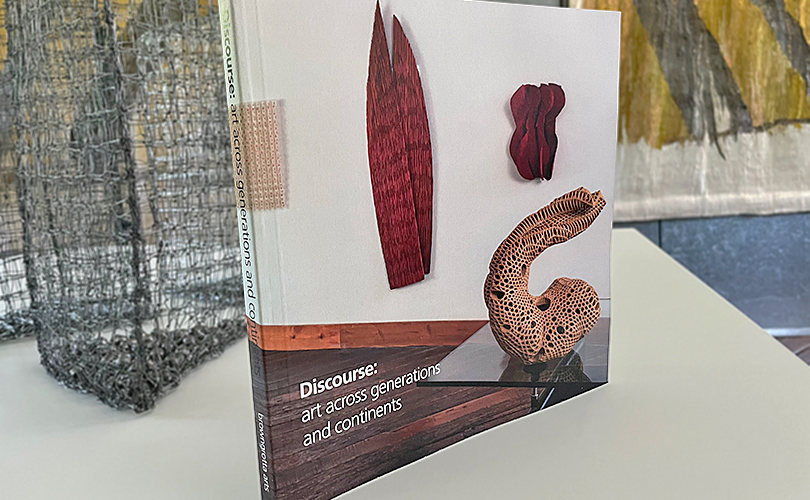
Our 59th catalog, Discourse: art across generations and continents, is now available from the browngrotta.com website. As you may know, we produce our catalogs in house. If you’ve purchased a copy, you should have gotten a Handle With Care insert that reads: ”Each browngrotta arts catalog is individually printed and hand bound. Once you have a copy in hand, please treat it gently. If you crack the spine to see if the pages will flutter out, they just might. So, please don’t. Thanks.” Our catalogs “have never been anything but labors of love,” Glenn Adamson observed on the occasion of our 50th catalog, “quite literally products of a family concern, a cottage industry.” (“Beyond Measure,” Glenn Adamson, Volume 50: Chronicling FIber Art for Three Decades, browngrotta arts, Wilton, CT, 2020.)
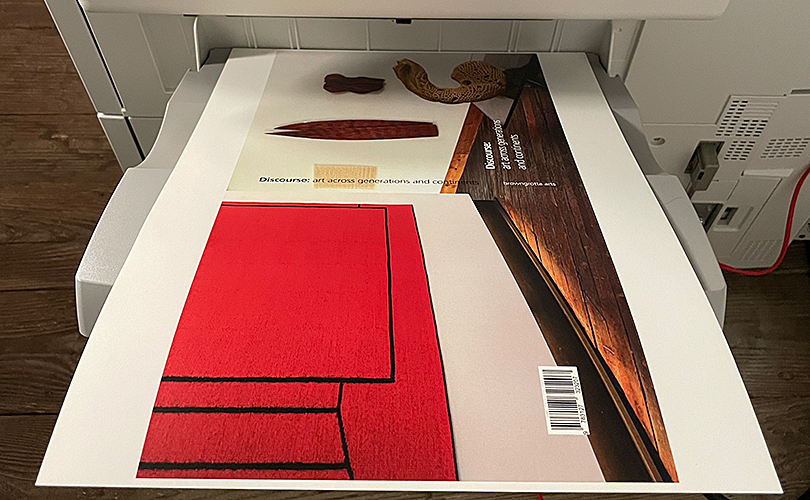
This Spring we had a brief delay in producing while we acquired a new printing press — smaller, faster, and with more bells and whistles. Our previous press, which we bought second-hand, had given up the ghost in May. But it did not give up until browngrotta arts had published more than a million pages, mostly on fiber art and artists. Our new printer has expanded features: it can handle heavier and larger sheets and spot varnish.

In Discourse: art across generations and continents, you’ll find work by 61 artists from 20 countries. There are 176 pages and hundreds of color photographs, including details. There are also short compilations of collections, exhibitions, and awards for each artist included.

Also included in the Discourse catalog is an insightful essay by Erika Diamond, an artist and curator and the Associate Director of CVA Galleries at the Chautauqua Institution in New York. In “Consonance of Strings,” Diamond identifies several themes that influence the artists in Discourse. These include textiles like Federica Luzzi’s and Mika Watanabe’s that mirror the human body, works like Stéphanie Jacques’ exploration of the void, that express a yearning for connection, and those finding order in chaos and harmony in disorder like the subversively “crushed” baskets by Polly Barton. Diamond makes broader observations about textiles’ ability to provide interconnections and common ground for viewers. She compares textiles to quantum physics’ theory of vibrating strings of energy making up the world. Textiles, she sees as “… lines in space — stitches, braids, weavings — moving and bending in search of unity and reconciliation between even the most vastly different materials and ideas.”
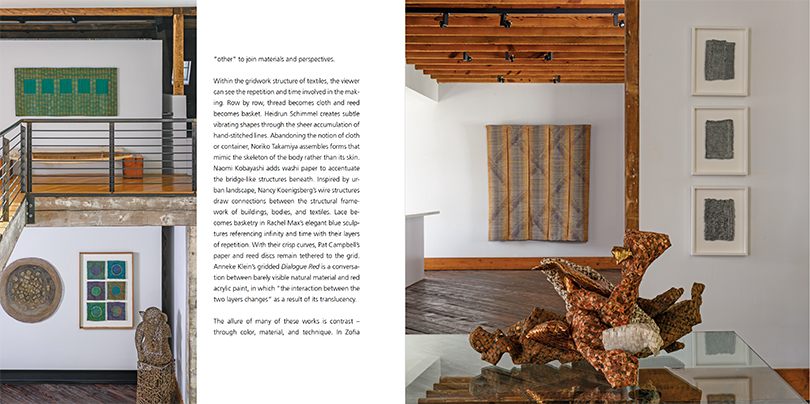
Get your copy of the Discourse catalog from our website: https://store.browngrotta.com/c53-discourse-art-across-generations-and-continents/. It’s a good read!



